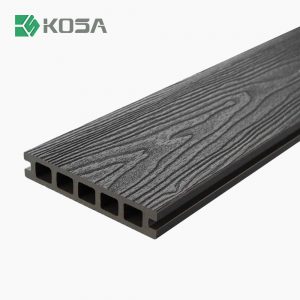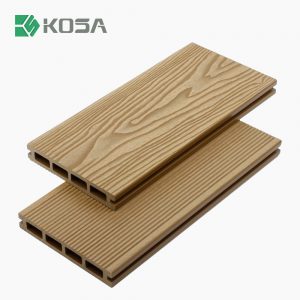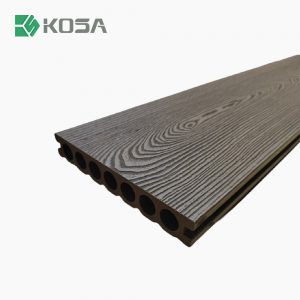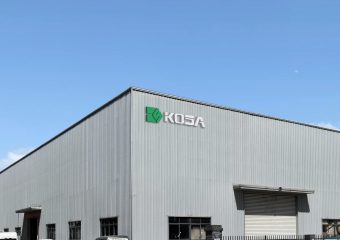 Traditional WPC Decking or Wood Plastic Composite Decking and Co-extrusion Decking are both popular choices for outdoor decking, but they have some distinct differences.
Traditional WPC Decking or Wood Plastic Composite Decking and Co-extrusion Decking are both popular choices for outdoor decking, but they have some distinct differences.
Traditional WPC Decking is made by combining wood fibers and plastic. It offers good durability, resistance to moisture and pests, and relatively low maintenance. However, its performance in terms of color retention and surface hardness might be somewhat limited.
Co-extrusion Decking typically features a multi-layered structure. The outer layer is often made of a more durable and UV-resistant PE material, which provides enhanced color stability and protection against fading and scratching. This makes it more resilient in harsh outdoor conditions and gives it a longer-lasting aesthetic appeal.
In terms of cost, Co-extrusion Decking might be slightly more expensive upfront compared to standard traditional WPC decking. However, its superior performance and longer lifespan could potentially offset the initial investment over time.
Installation processes for both traditional WPC decking and Co-extrusion decking can be similar, but the specific requirements might vary depending on the product and manufacturer.
Ultimately, the choice between traditional WPC Decking and Co-extrusion Decking depends on your budget, aesthetic preferences, and the level of performance and durability you expect from your outdoor deck.





